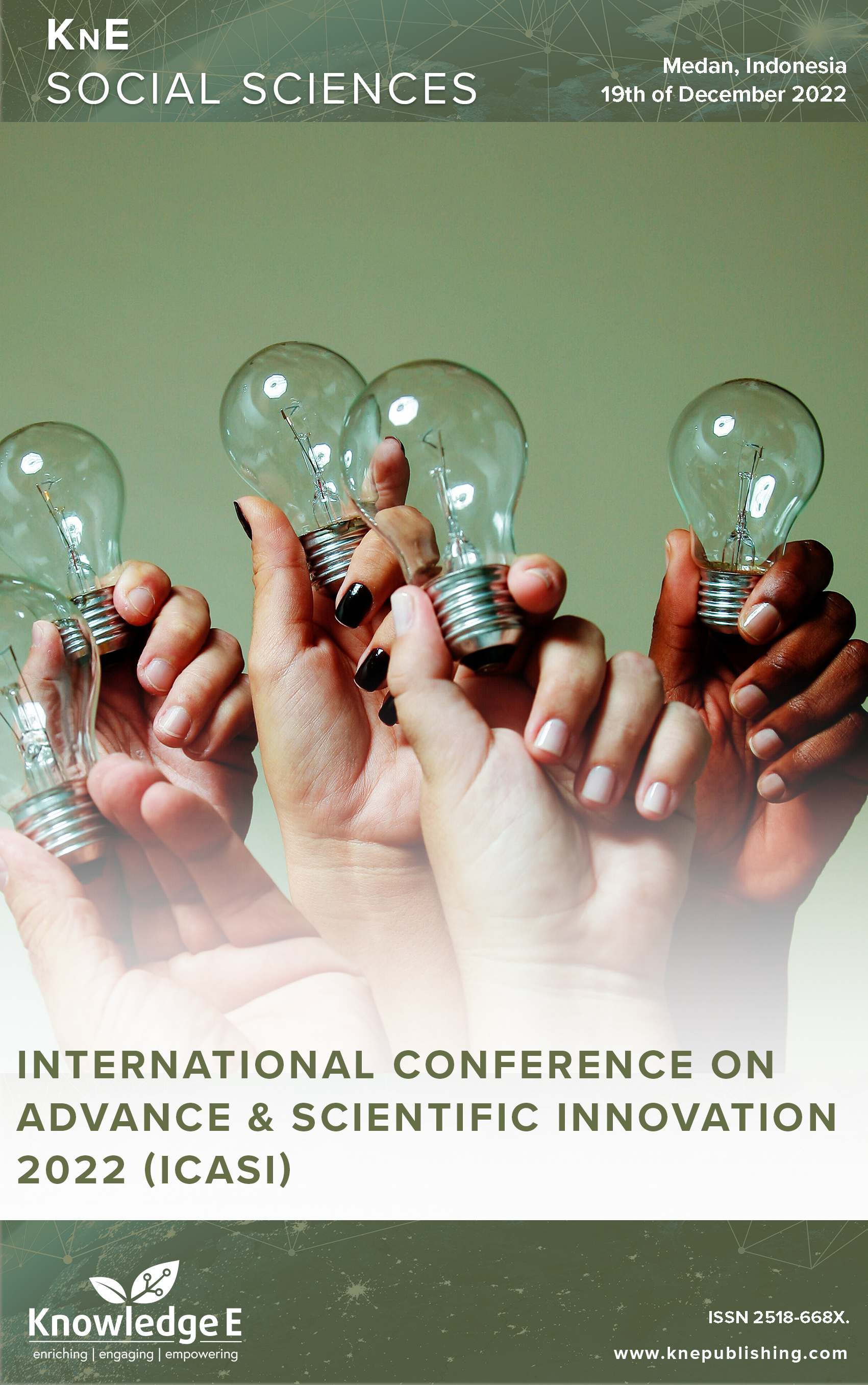Clustering Analysis Using K-Medoids on Poverty Level Problems in Central Java by District/City
DOI:
https://doi.org/10.18502/kss.v8i9.13321Abstract
Poverty describes the absence of property and poor income or the circumstance that the food, shelter, and clothing needs cannot be met. The performance of Central Java in poverty reduction has risen and declined during the last decade. This research aims to perform mapping analyses utilizing artificial intelligence techniques as clusters on the number of poverty levels in Central Java districts or cities. Since Central Java is after West Java and East Java is the third most populous province, this was necessary to achieve in the last few years through regional mapping of a macro-picture of the poverty level. The dataset used is from the statistics agency website on the number of poor people (millennia) in 2017–2019. The data used are from the Central Java Statistical Agency. The way to map the clusters is using the k-medoids method which is part of data clustering. The number of clusters utilized for mapping poverty levels is high and low. The results showed six provinces (17%) in the high and 29 (83%) in the low. In the high cluster (cluster 1) and in the low cluster (cluster 1) and {18.6, 19.4, 20.1} the final centroid values for each cluster were {293.2, 309.2, 343.5}. The results of mapping can help address the poor in places in which the high cluster (cluster 1), Cilacap District, Banyumas District, Kebumen District, Grobogan District, Pemalang District, and Brebes District are a priority of the government in Central Java province.
Keywords: K-Medoids, clustering, poverty
References
[2] Wanto A, Hardinata JT. Estimations of Indonesian poor people as poverty reduction efforts facing industrial revolution 4.0. IOP Conf Series Mater Sci Eng. 2020;725(1):1– 8.
[3] BPS. “Kemiskinan 2017-2019,” Badan Pusat Statistik Provinsi Jawa Tengah, 2020. [Online]. Available: https://jateng.bps.go.id/indicator/23/34/1/kemiskinan.html. [Accessed: 25-Oct-2020].
[4] Damanik IS, Windarto AP, Wanto A, Poningsih SR, Andani SR, Andani SW, et al. “Decision tree optimization in C4.5 algorithm using genetic algorithm”. J Phys Conf Ser. 2019 Aug;1255(1):1–6.
[5] Katrina W, Damanik HJ, Parhusip F, Hartama D, Windarto AP, Wanto A. C.45 Classification rules model for determining students level of understanding of the subject. J Phys Conf Ser. 2019;1255(1):1–7.
[6] Siahaan H, Mawengkang H, Efendi S, Wanto A, Perdana Windarto A. Application of classification method C4.5 on selection of exemplary teachers. J Phys Conf Ser. 2019;1235(1):012005.
[7] Parlina I, Yusuf Arnol M, Febriati NA, Dewi R, Wanto A, Lubis MR, et al. Naive Bayes algorithm analysis to determine the percentage level of visitors the most dominant zoo visit by age category. J Phys Conf Ser. 2019;1255(1):1–5.
[8] Hartama D, Perdana Windarto A, Wanto A. The application of data mining in determining patterns of interest of high school graduates. J Phys Conf Ser. 2019;1339(1):1–6.
[9] Hanafiah MA, Wanto A, Indonesia PB. Implementation of data mining algorithms for grouping poverty lines by District/City in North Sumatra. Int J Inf Sys Technol. 2020;3(2):315–322.
[10] Febriyati NA, GS AD, Wanto A. “GRDP growth rate clustering in Surabaya City uses the K-Means algorithm”. Int J Inf Sys Technol. 2020;3(2):276–283.
[11] Sudirman S, Windarto AP, Wanto A. Data mining tools | RapidMiner : K-Means method on clustering of rice crops by province as efforts to stabilize food crops in Indonesia. IOP Conf Series Mater Sci Eng. 2018;420(012089):1–8.
[12] Abbas SA, Aslam A, Rehman AU, Abbasi WA, Arif S, Kazmi SZ. K-Means and KMedoids: Cluster analysis on birth data collected in City Muzaffarabad, Kashmir. IEEE Access. 2020;8:151847–151855.
[13] Hutagalung J, Ginantra NL, Bhawika GW, Parwita WG, Wanto A, Panjaitan PD. COVID- 19 cases and deaths in Southeast Asia clustering using K-Means algorithm. J Phys Conf Ser. 2021;1783(1):012027.
[14] Milkhatun M, Rizal AA, Asthiningsih NW, Latipah AJ. “Performance assessment of university lecturers: A data mining approach.” Khazanah Informatika: Jurnal Ilmu Komputer dan Informatika. 2020;6(2):73–81.
[15] Rahman F, Ridho II, Muflih M, Pratama S, Raharjo MR, Windarto AP. Application of data mining technique using K-Medoids in the case of export of crude petroleum materials to the destination country. IOP Conf Series Mater Sci Eng. 2020;835(1):012058.
[16] Huang M, Hong C, Ma C, Luo Z, Du S, Yang F. A new representative sampling method for series size Rock joint surfaces. Sci Rep. 2020 Jun;10(1):9129.

